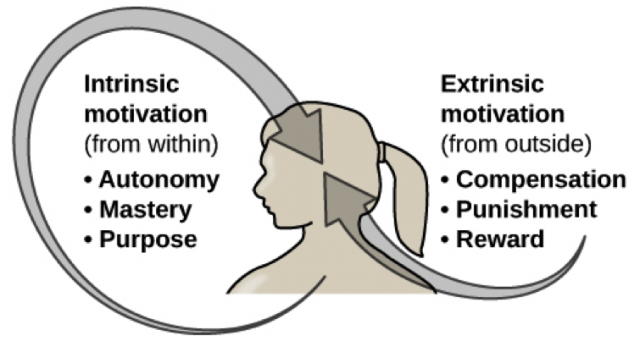What the Most Successful People Know About Finding Career Happiness

“You work is going to fill a large part of your life, and the only way to be truly satisfied is to do what you believe is great work. And the only way to do great work is to love what you do.” – Steve Jobs
A 2015 SHRM report found that, in 2014, 86 percent of U.S. employees were satisfied with their current jobs – up from 81 percent in 2013. Of this group, 39 percent of employees said they were very satisfied with their jobs.
Do the math: that means overall, only 33 percent of people in the entire study are very satisfied with their jobs. Does that number ring a bell? It reminds us of the ever-so-famous 31 percent of people who consider themselves engaged at work, according to Gallup. If only one-third of the American workforce is engaged and/or very satisfied with their jobs, then what are we doing wrong?
The 5 Keys to Employee Engagement
According to the SHRM study cited above, the “top five contributors to employee job satisfaction in 2014” were as follows:
- Respectful treatment of all employees at all levels
- Trust between employees and senior management
- Employee Benefits
- Compensation
- Job security
Perhaps if we placed more value on intrinsic motivators, rather than extrinsic motivators, more employees would be very satisfied with their jobs.
Take a look at the differences between intrinsic motivation and extrinsic motivation:

Of all those five key factors for job satisfaction, how many cost money? Just compensation and benefits (and that’s counting tangible benefits; flex hours, vacation time, and work from home hours aren’t included here.)
But what about intrinsic motivation? That comes from finding work you truly love to do, work that gives you a sense of purpose. That sort of thing doesn’t cost any money.
What should we focus on in order to bring intrinsic motivation to our work lives? If people placed higher importance on the following things, then more employees would find genuine satisfaction in their jobs:
1. Opportunities for People to Use Their Skills and Abilities in Their Work
This factor came in at No. 7 on SHRM’s list of job satisfaction contributors. Not too shabby! But if more people valued this, perhaps they’d find happiness in jobs that play to their strengths.
“The secret of joy in work is contained in one word – excellence. To know how to do something well is to enjoy it.” – Pearl S. Buck, author and activist.
Employees who apply their strengths in their roles every day develop positive work habits that lead to higher engagement. Using strengths also enables employees to better handle stress and negative emotions in the workplace, according to Gallup.
2. The Work Itself
Employees who find value in the actual work they do will likely be more satisfied in their jobs, even if those jobs are relatively mundane.
“If it falls your lot to be a street sweeper, go out and sweep streets like Michelangelo painted pictures. Sweep streets like Handel and Beethoven composed music. Sweep streets like Shakespeare wrote poetry. Sweep streets so well that all the hosts of heaven and earth will have to pause and say: ‘Here lived a great street sweeper who swept his job well.'” – Martin Luther King, Jr.
Even the most fulfilling jobs can contain admin tasks that wreak havoc on happiness. Finding joy in small tasks and seeing how those small tasks contribute to the bigger picture can bring satisfaction to employees. Most of the time, these mundane tasks are repetitive, but if they can be associated with positive habits – like putting on your favorite song while you do them – we can turn around our cynical attitudes toward the work we don’t absolutely love to do.
3. Autonomy and Independence

“There comes a time when you ought to start doing what you want. Take a job that you love. You will jump out of bed in the morning. I think you are out of your mind if you keep taking jobs that you don’t like because you think it will look good on your resume. Isn’t that a little like saving up sex for your old age?” – Warren Buffet
Nailed it! The third richest person in the world knows a little something about autonomy and the effects it has on business. Buffet’s Berkshire Hathaway avoids consultants and approaches business as a partnership, not a corporation. According to the New York Times, “Berkshire’s subsidiaries run businesses and adopt approaches that turn traits like reputation and a sense of permanence into constituent satisfaction and managerial flexibility that bolsters financial results.”
This independence-focused philosophy bolsters economic growth, and we think it can translate to employee satisfaction, too. Research shows that, when employees are given freedom, job satisfaction rises.
Money Can’t Buy Happiness
While this isn’t one of the ranking factors on SHRM’s list, it is a key reminder for anyone looking to find career happiness. Take it from the experts:
“You can only become truly accomplished at something you love. Don’t make money your goal. Instead, pursue the things you love doing and then do them so well that people can’t take their eyes off of you.” – Maya Angelou
“Paul and I, we never thought that we would make much money out of the thing. We just loved writing software.” –Bill Gates
“The law of work seems unfair, but nothing can change it; the more enjoyment you get out of your work, the more money you will make.” –Mark Twain
So, how can you apply this to your own career? By loving what you do, no matter where you are. Seek out places that can not only give you respect and compensation, but also provide autonomy and impactful work.
After all, life is too short to spend it grinding away at a job you don’t love. While it’s imperative for employers and managers to work on getting America more engaged at work, it’s also up to the workers themselves.

